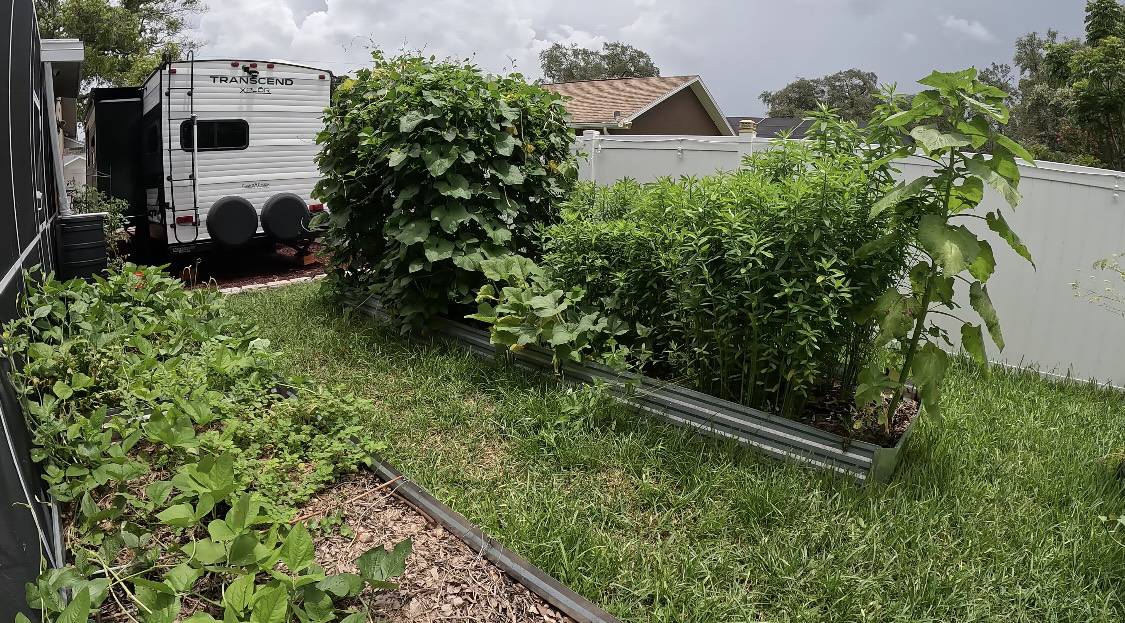Last Updated on January 12, 2024 by Homegrown Florida
Have you ever come across those captivating videos or social media posts showcasing plants regrown from kitchen scraps? I’ve seen my fair share, and, I’ll admit, I’ve been a bit skeptical about the practicality of these methods. In today’s exploration, I decided to put these regrowth claims to the test.
Vegetables That Actually Work:
Starting with a list of vegetables that are known to regrow successfully from kitchen scraps, let’s rank them from most effective to least effective based on my experiences.
- Sweet Potatoes: Grown traditionally from slips, sweet potatoes prove effective when regrown from store-bought organic varieties. Surprisingly, slips grown at home outperformed purchased ones.
- Rosemary: Regrowing rosemary from store-bought sprigs turned out to be a great success. Stripping the leaves, dipping the stem in honey, and planting it in potting soil led to the flourishing of rosemary plants.
- Potatoes: Store-bought potatoes can be buried once they sprout, leading to the growth of more potatoes. While seed potatoes from nurseries may yield healthier plants, organic store-bought potatoes also produce a decent crop.
- Garlic: Growing garlic from store-bought cloves proved to be more of a challenge. The outcome was less favorable as the plants were not healthy and productive. Choosing the right garlic variety is crucial, especially in warm climates.

Exploring New Veggies:
Now, let’s delve into my experiment with regrowing some less conventional vegetables:
- Pineapple: Comparing a homegrown pineapple top with one purchased, differences in leaf color and base appearance were noted. The time between attempting to root the top and the pineapple’s harvest may play a role in the success of regrowth.
- Green Onions: Regrowing green onions from store-bought ones proved to be a simple and successful venture. While they won’t form onion bulbs, they continuously regrow the green onion tops.
- Celery: Attempting to regrow celery from a whole purchased stalk showed promise. While I didn’t observe root formation, new leaves sprouted from the center, and it now thrives in the garden.
- Lettuces (Romaine and Green Leaf): Similar to celery, lettuces showed signs of regrowth with new leaves emerging from the center. While they might not form full heads, they are expected to yield loose leaf lettuce.
- Thyme: Trying thyme sprigs from the grocery store using a similar method to rosemary is ongoing. While the plants initially looked battered, their survival suggests potential success.
- Dry Red Beans: Experimenting with dry red beans from the store for future planting showed positive results. The plants are growing, and flowering has begun, promising a potential seed harvest.
- Sugar Snap Peas: Attempting to regrow fresh sugar snap peas from the store didn’t succeed, likely due to the immaturity of the peas inside. This experiment serves as a reminder of the limitations in regrowing certain vegetables from young and tender scraps.

This gardening experiment has revealed a mix of successes and challenges in regrowing vegetables from kitchen scraps. While some methods proved highly effective, others faced obstacles. Incorporating these regrowth hacks into your gardening routine can offer benefits, such as extending lettuce growing seasons and easily cultivating green onions. While they might not replace traditional seed planting entirely, these kitchen scrap regrowths could be valuable additions to your gardening repertoire.


